As over a million Ukrainians flee their homeland to escape Russia’s invasion, one of Europe’s worst conflicts since the Second World War has also sparked panic on commodities markets.
Note: This article was updated on 4 March 2022
On 3 March, as Russia intensified its assault and seized control of major Ukrainian city Kherson, Brent crude oil prices jumped close to $120 a barrel – their highest level in a decade. Grains had also earlier climbed 20% week on week. “Wheat prices have risen by double-digit percentages and just hit 14-year highs,” says Michael Rabinovitz, commodities analyst at Rabobank. “Corn prices are similarly extremely elevated. Vegetable oil prices are at records.”
All ports in Ukraine are to remain closed until the end of the Russian invasion, according to AHDB, which notes the country has “sizeable volumes of wheat (5.5Mt), maize (13.7Mt) and sunflower oil (4.0Mt) to export before the end of the season”.
Russian exports continue, but face “severe disruption, with international sanctions limiting credit availability, and disruption to shipping routes,” AHDB says.
Indeed, there has been “growing cancellation of tenders for grains shipments from Russia”, in turn leading to more demand for grain from elsewhere in Europe and North America, says Mintec analyst Zanna Aleksahhina.
With both countries major suppliers of grains and oilseeds to the global market – and Russia a key producer of nitrogen – fears are mounting over potential food shortages. Northern Ireland’s agriculture minister Edwin Poots said the consequences of the invasion were likely to be “significantly greater” for food supplies than Brexit.
So, what impact is the conflict having on food prices and businesses in Britain?
Wheat
With Russia and Ukraine accounting for 23% of global wheat exports, according to US Department of Agriculture (USDA) estimates, wheat prices soared on the news of the invasion.
By 28 February, UK feed wheat futures closed at a new high of £252.05/t amid “increasing concerns that tensions may last longer than first expected”, according to AHDB. European milling wheat traded in Paris also hit a historic high, while the US benchmark wheat prices in Chicago reached their highest level for 13 years.
“The conflict prevents exports from Ukraine in the short term as ports are currently closed to commercial shipping. Russian exports are also more difficult due to international sanctions limiting credit availability, and disruption to shipping routes,” said AHDB. ”This pushes more demand to other exporters, including the US and EU.”
Fears now growing over disruption to spring planting in Ukraine, which would reduce 2022/23 supplies. “Even if the war stopped next week, the damage to the Ukrainian infrastructure will reduce grain output from Ukraine this year at least if not next”, warns Tim Lang, professor emeritus of food policy at City University.
Indeed, with stocks already low in wheat exporting countries and risks to 2022/23 production, the longer-term outlook is “highly uncertain”, AHDB warns. “Much depends on how long the conflict lasts.”
Maize
Ukraine is also a major supplier of maize to the world – accounting for around 17% of global exports – and with exports paused in the wake of the invasion, prices have surged. The sharp rise in wheat prices is also likely having an impact on prices by pushing “more animal feed demand to maize”, says AHDB.
If the conflict continues, disruption to spring planting in Ukraine could also reduce 2022/23 supplies. With global stocks relatively tight, one trader told Mintec “the prices on corn could very well reach levels we have never seen”.
Some respite on global prices could come from Brazil, where the Safrinha corn crop was around 54% planted, according to Mintec. “The current planting pace is well ahead of the five-year average owing to near-ideal conditions, with soil moisture rated as excellent and good oncoming weather,” it says. While there is a long way to go until harvest, which takes place around June, the estimated production levels look large “with a potential 89-90 million metric tonnes to be produced”, Mintec adds.
“This, combined with the other Brazilian corn crops, could realise a total output of 116 million tonnes. Which would be a new record, increasing corn supplies globally, according to market participants.”
Sunflower oil
Tensions between Russia and Ukraine had an impact on sunflower oil prices ahead of the invasion. On 23 February, Mintec reported that the Mintec Benchmark Prices [MBP] for Sunflower Oil 6 Ports Option [Mintec Code: SFOR] was assessed at $1,560/Mt, up $75.50/Mt compared with 16 February. Prices rose again when the Russian military moved into Ukraine, but subdued slightly last Friday.
Ukraine and Russia produce the majority of the world’s sunflower seeds and account for the “lion’s share” of sunflower oil exports, according to Mintec, which warned conflict between the two nations would “likely see the sunflower seed and oil market unavailable to buyers as it is likely that ports would be inaccessible and exporting sunflower seed and oil would not be a major priority for the nations”.
Sanctions from the west on Russia will also likely limit availability of oilseeds from the Black Sea region, AHDB noted. Russia and Ukraine were expected to account for 78% of sunflower oil exports this season and disruption could force a switch to other vegetable oils, influencing rapesed oil, soy oil and palm oil prices, it noted.
Brent crude oil
Brent crude oil prices also surged in the wake of Russia’s invasion of Ukraine, surpassing $100 a barrel for the first time since 2014. Prices levelled off slightly when Russia agreed to ceasefire talks with Ukraine. However, they soared again as a Russian military convoy approached Ukraine’s capital Kyiv after negotiators failed to reach a resolution, and by 3 March had surpassed $118 a barrel.
Russia is the world’s second-largest exporter of crude oil, and there are concerns sanctions could restrict supplies and further drive up global prices. “The fragile situation in Ukraine and financial and energy sanctions against Russia will keep the energy crisis stoked and oil well above $100 per barrel in the near-term and even higher if the conflict escalates further,” Louise Dickson, senior oil market analyst from Rystad Energy, said in a note.
The surge in oil prices had an immediate impact at the pumps, with unleaded petrol prices hitting 151.67ppl on 2 March, while diesel surged to 155.23ppl.
RAC fuel spokesman Simon Williams warned the increase would cause ”untold financial difficulties for many people who depend on their cars for getting to work and running their lives”.
“At $120 a barrel – without any change to the exchange rate which is currently at $1.35 – we would be looking £1.60 a litre and £88 for a full tank,” he said.
There will also be a knock-on impact on plastic and fertiliser, warns Tim Lang, professor emeritus of food policy at City University, who says food prices “will undoubtedly accelerate further” as farmers and food businesses are forced to pass on additional costs. “When oil prices go up, plastic goes up, so we can expect the food retail sector is going to have to pass on price rises,” he says.
Russia is a major exporter of fertiliser, in part due to its status as one of the world’s top three oil and gas sources. Although Russian energy exports have not been targeted by sanctions due to European dependence on Moscow’s gas supplies, any disruption to supply would have a knock-on effect on commodities, warns trading platform IG.
British farmers were already facing a cost crisis as a result of surging prices for fertiliser, which have risen 200% in the past year, according to NFU president Minette Batters.
With grain prices and fertiliser also pushing up the cost of animal feed, there could be implications for meat and dairy prices, experts warn. “Sheep concentrate feed is now well over £300 a tonne and would have been in the low £200s previously”, says Phil Stocker, CEO of the National Sheep Association. The war will “add to the inflationary pressure” on farmers, he says.
Elsewhere, surging energy and commodity prices are adding to cost pressures for food manufacturers and distributors, who raised their concerns with Defra in meetings held late last week.
“Food distributors’ energy bills are high at the best of times, with their need for refrigeration, heating, lighting and vehicle fuel, and the low margins on which they operate are already under severe strain as commodity prices and labour costs are also rising,” says FWD CEO James Bielby.
FIsh
Though Russian food exports have not been included in sanctions, the UK government has banned its ships from docking, possibly jeopardising imports of one-fifth of the whitefish eaten in the UK and threatening price hikes of up to 30%.
“Anecdotally, the UK supply chain is estimated to rely on Russian product for at least 20% of their whitefish supplies,” says Aoife Martin, director of operations at Seafish. It’s a percentage regarded as “a significant underestimate” due to Russian-caught fish being processed in China and Germany before being shipped on, Martin adds.
And the war is already roiling shipping, with giants MSC and Maersk this week saying they would temporarily halt cargo to and from Russia, though exceptions were announced for “foodstuffs, medical and humanitarian supplies”.
Indeed, while “vessels continue to operate freely throughout the wider Black Sea,” according to Munro Anderson, Dryad Global’s head of intelligence, there are concerns the conflict could have wider implications for global shipping routes in the long term.
“You could see them [Russia] making a play for maritime dominance in the Black Sea and you could see that being countered”, suggests army major general David Shoesmith of Universal Defence and Security Solutions, though he notes it is “in Russia’s interests to keep that grain flowing, if they can”.
With commodities under pressure and supply chains in turmoil, economists have warned UK inflation could peak at more than 8%. But the true cost of the conflict – for Ukraine and the wider world – remains almost impossible to predict.
US president Joe Biden said on Tuesday that Russia’s leader Vladimir Putin “has no idea what’s coming”. With the situation intensifying by the hour, it seems no one really does.








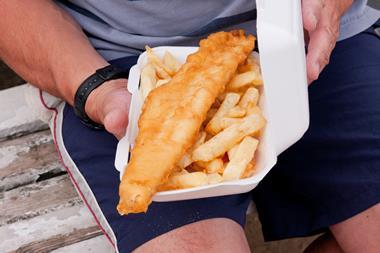

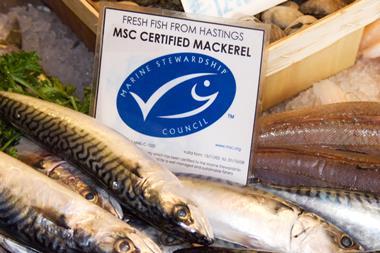
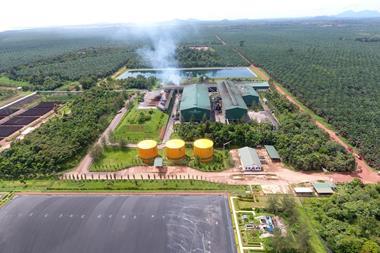
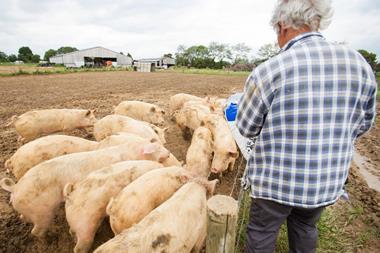
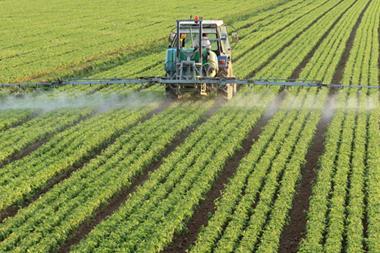






No comments yet